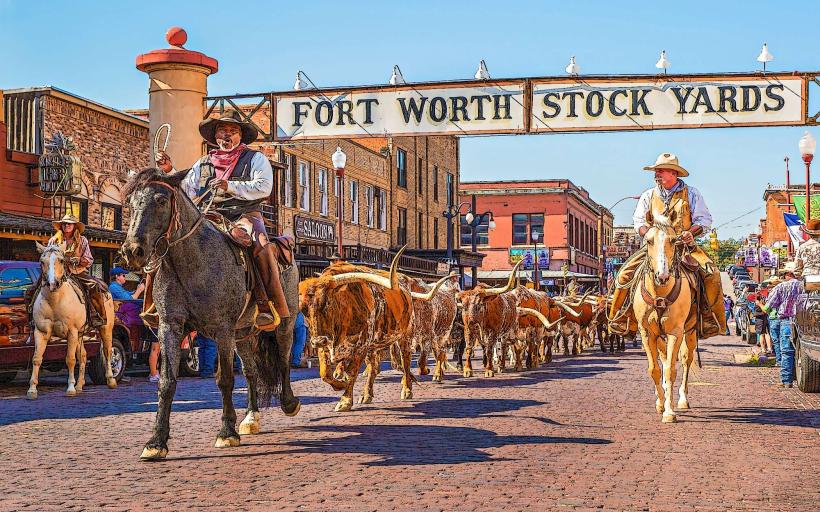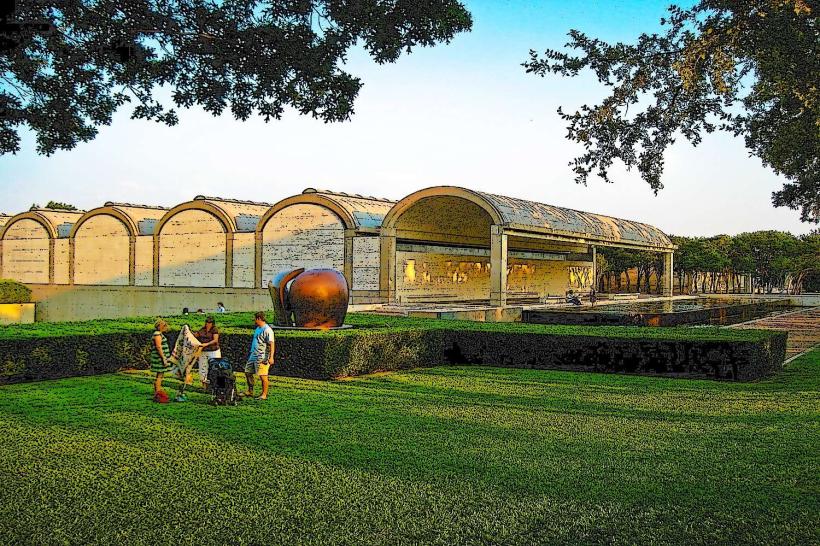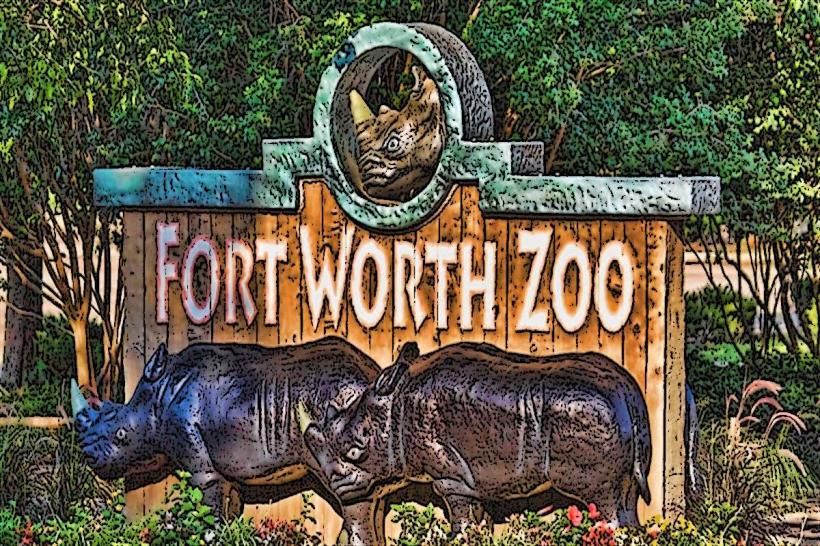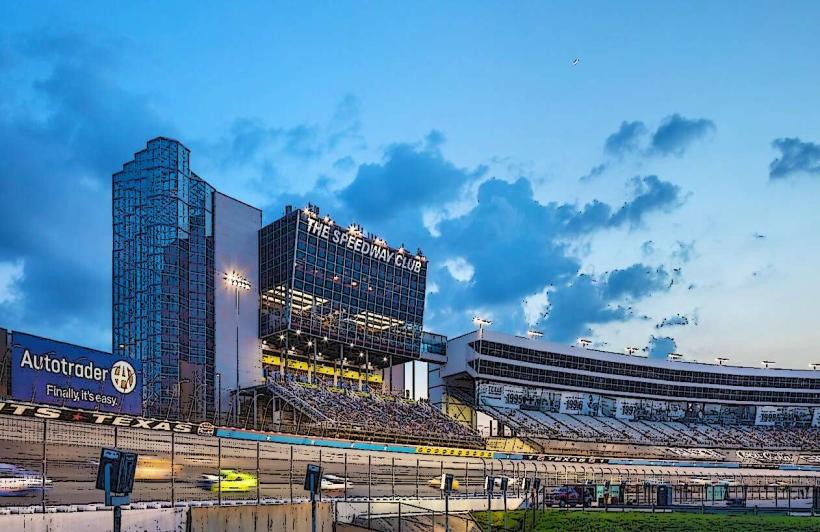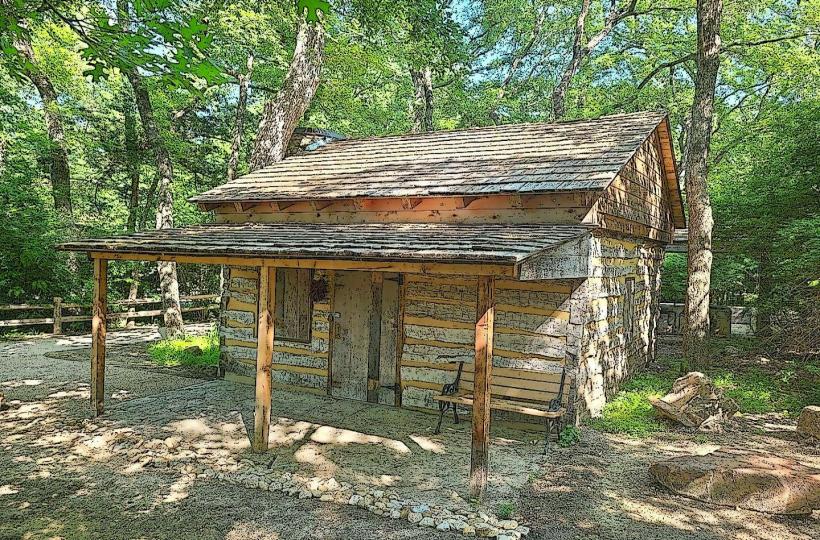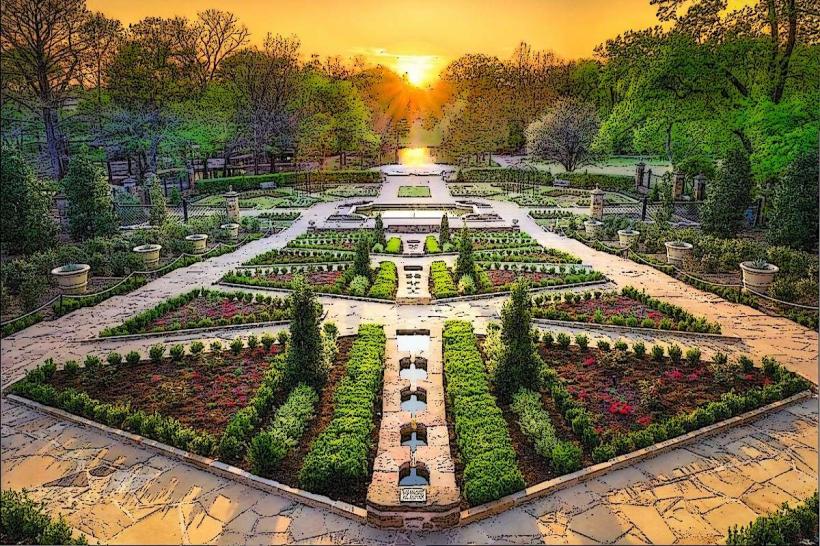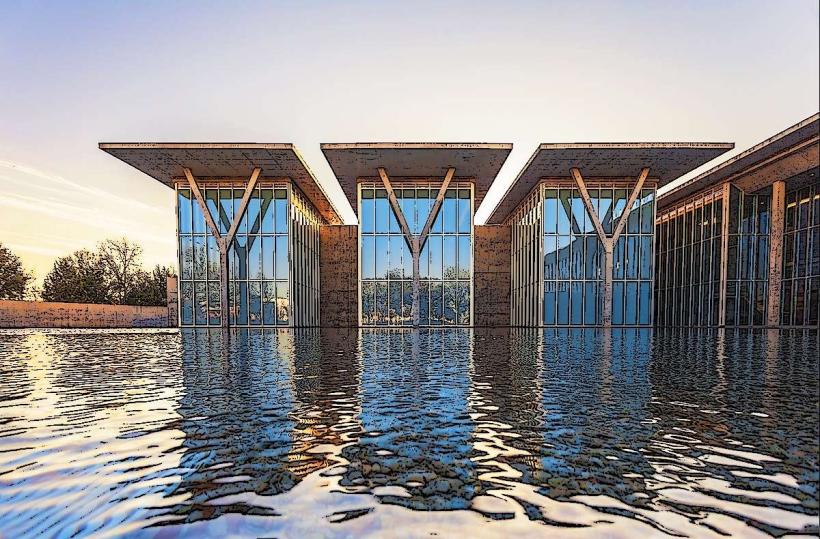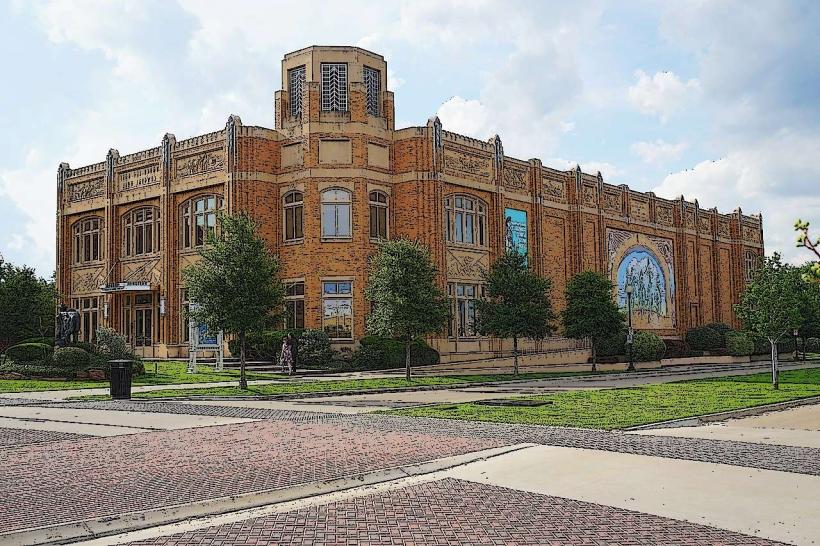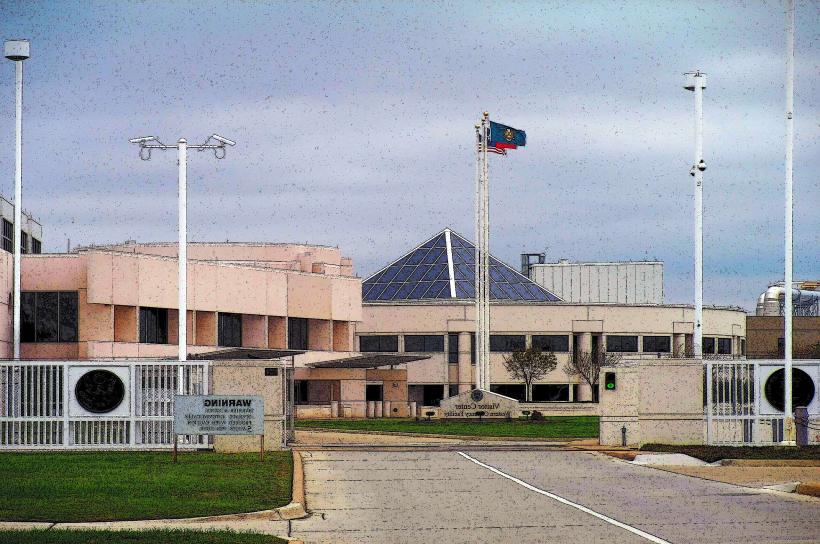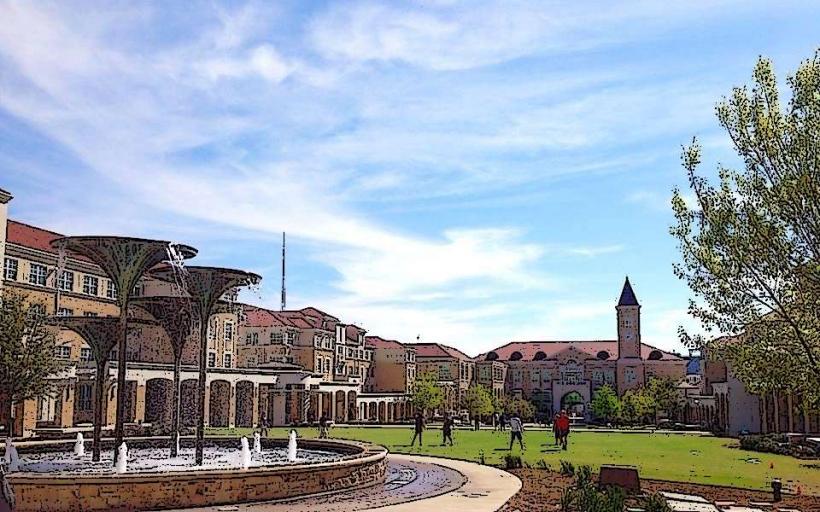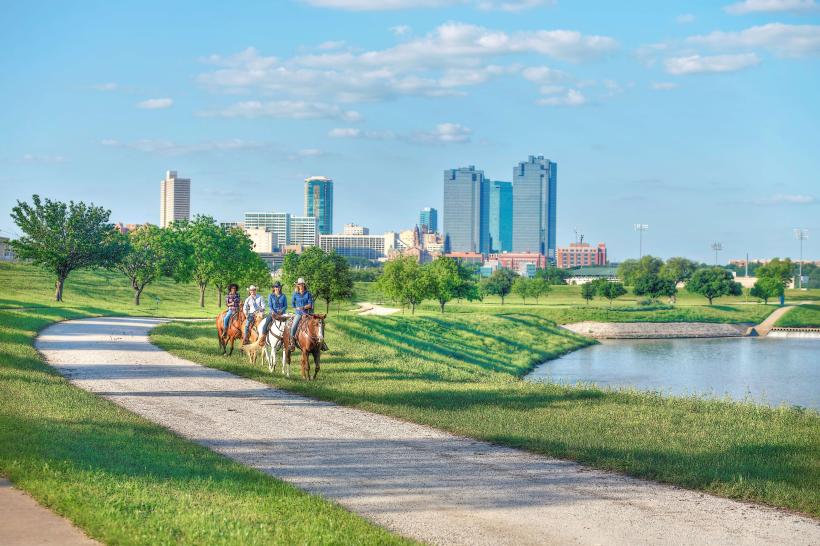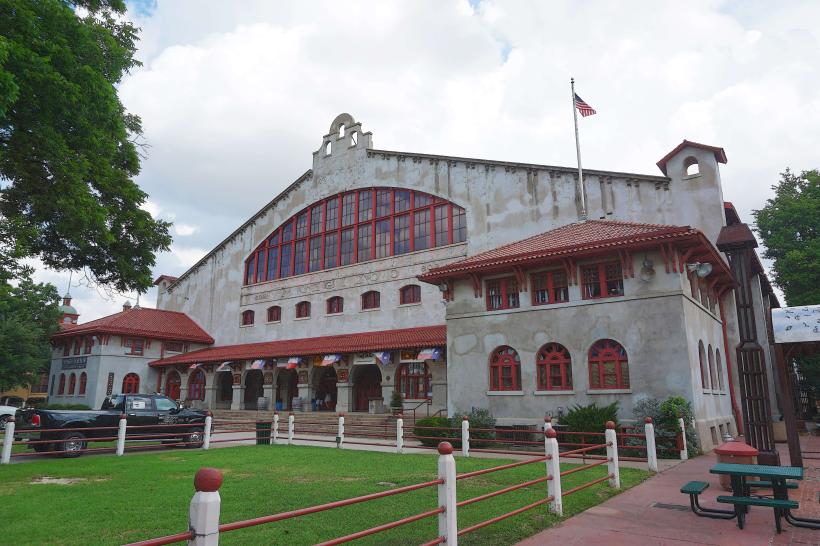Information
Landmark: Fort Worth Water GardensCity: Fort Worth
Country: USA Texas
Continent: North America
Fort Worth Water Gardens, Fort Worth, USA Texas, North America
The Fort Worth Water Gardens is a modernist urban park in downtown Fort Worth, Texas, covering 4.3 acres next to the Fort Worth Convention Center. Designed by famed architects Philip Johnson and John Burgee and opened in 1974, it is celebrated for its innovative use of water, concrete, and open space to create an urban sanctuary that contrasts with the surrounding city environment.
Architectural Concept and Design
The Water Gardens is not a traditional botanical garden—it is an architectural water feature that incorporates hardscape design, with dramatic geometric forms and cascading water. Johnson and Burgee conceived the space as a “cooling oasis” where water could be both visually and audibly engaging in an urban context.
The park is laid out in a series of zones, each emphasizing a different interaction with water: movement, stillness, and mist.
Main Features
1. The Active Pool
The most iconic and visually striking part of the Water Gardens.
Consists of terraced steps that descend into a sunken plaza with water cascading down concrete walls into a central pool.
The design allows visitors to walk down into the basin along large, flat steps while surrounded by water flowing on all sides.
Water drops nearly 38 feet, creating a powerful sound and sensory experience.
This part of the garden has been featured in multiple films, including Logan’s Run (1976).
2. The Quiet Pool
Provides a stark contrast to the Active Pool.
It is a large, still reflecting pool surrounded by towering, sloped walls with water gently sliding down their sides.
Bald cypress trees line the perimeter, and the noise of the city is muted by the acoustics of the space.
The experience is meditative and introspective.
3. The Aerated Pool
Located near the southeastern part of the park.
Features dozens of bubbling fountains that spray water into the air from submerged jets.
Especially atmospheric at night due to underwater lighting.
Creates a misty, refreshing area that cools the space during hot Texas summers.
4. The Mountain and Stage
A large terraced structure made of stacked concrete blocks known as “The Mountain.”
Visitors can climb it for views of the plaza or rest along its tiers.
Adjacent is a flat, grassy lawn and open-air stage used for performances and gatherings.
This is the park’s only grassy area, offering a contrast to the otherwise hard-edged landscape.
Historical Context
The park was built on a site once known as “Hell’s Half Acre,” an infamous red-light district in the 19th century filled with saloons and gambling dens frequented by cowboys, outlaws, and cattle drivers. By the 20th century, the area was redeveloped as part of Fort Worth’s downtown renewal projects.
The Water Gardens was commissioned by the Amon G. Carter Foundation as a public gift, intended to bring a world-class civic space to the heart of the city.
Renovations and Safety
In 2004, a tragic incident occurred when four people drowned in the Active Pool while trying to rescue a child. In response, the city of Fort Worth made significant safety changes:
The water depth in the Active Pool was reduced.
Access barriers and signage were added.
Swimming and wading were explicitly prohibited.
Regular maintenance and monitoring were increased to ensure ongoing safety.
Visiting Information
Location: 1502 Commerce Street, Fort Worth, TX 76102
Hours: Open daily from 6:00 AM to 10:00 PM
Admission: Free to the public
Amenities: Drinking fountains, nighttime lighting, event spaces, ADA access
Nearby Landmarks: Fort Worth Convention Center, downtown hotels, Sundance Square
Cultural Significance
The Fort Worth Water Gardens is considered one of the finest examples of modern landscape architecture in the U.S. It offers a rare experience where public art, architecture, and urban planning intersect. Though it's often described as “futuristic” in style, the gardens remain timeless in their emotional and sensory impact.
Visitors often describe the Water Gardens as a peaceful, reflective place, especially in the Quiet Pool, or invigorating and energizing when near the Active Pool. It is both a retreat and an attraction—an artistic environment that changes with time of day and season.

